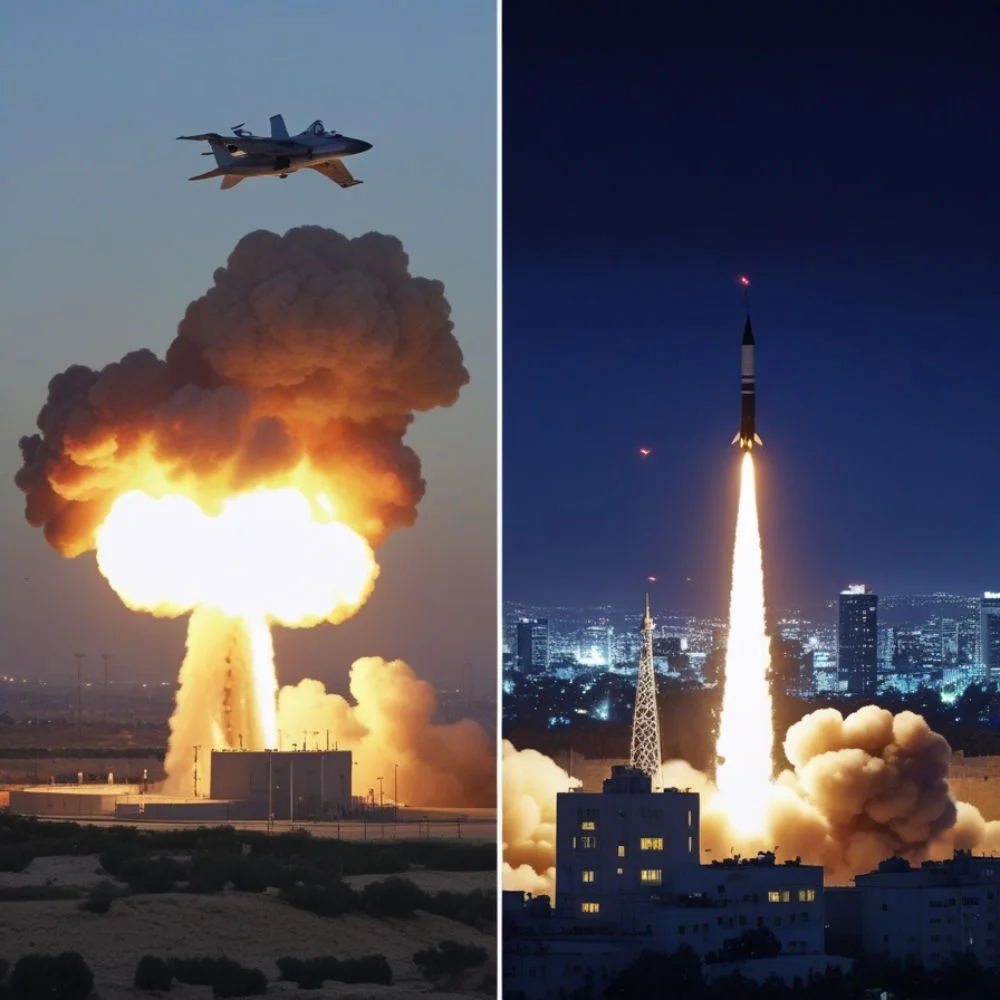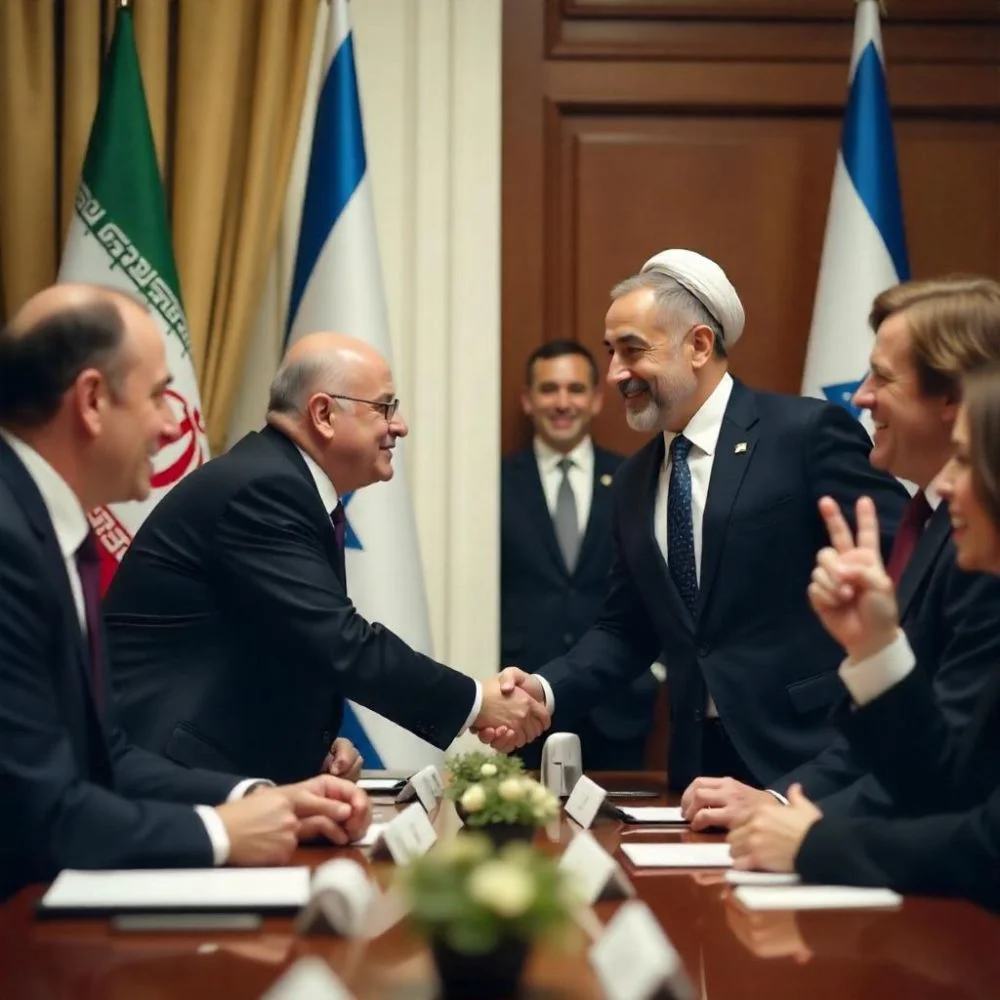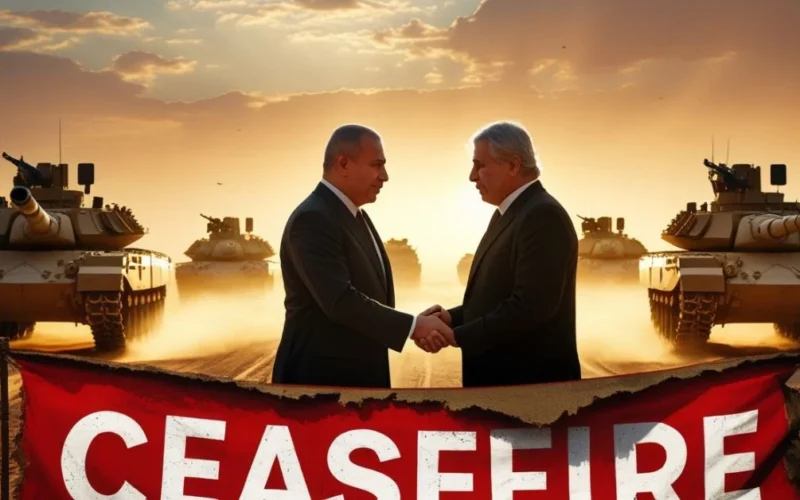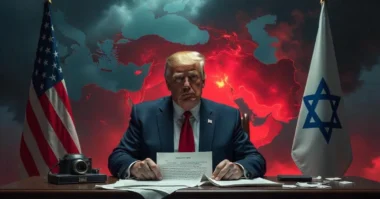Table of Contents
- What Is the Iran and Israel Ceasefire?
- Why Iran and Israel Went to War?
- Key Events Before the Iran and Israel Ceasefire
- Iranian Sites Attacked by Israel and U.S. Forces
- Iran and Israel Ceasefire Current Status (As of 24 June 2025)
- What does the Iran and Israel Ceasefire Agreement say?
- United States Role in Iran and Israel Ceasefire
- Global Reaction to the Iran and Israel Ceasefire
- Ongoing Risks to the Iran and Israel Ceasefire
- Steps Needed to Strengthen the Iran and Israel Ceasefire
- Conclusion
What Is the Iran and Israel Ceasefire?
The Iran and Israel ceasefire is a recent agreement made in June 2025. It was announced following 12 days of intense fighting between the two countries.. The ceasefire is meant to stop violence, prevent further damage, and reduce regional tension. Leaders from both sides agreed to pause all airstrikes and missile attacks. So far, the agreement is mostly holding, though tension remains. This marks a major turning point in recent Middle Eastern affairs.
Why Iran and Israel Went to War?
The reason behind the Iran and Israel conflict is long-standing hatred and distrust. Israel considers Iran a rising danger because it backs armed groups and its pursuit of nuclear capabilities. Iran, on the other hand, blames Israel for regional instability and accuses it of interfering in its affairs. The latest war started when Israel bombed Iranian nuclear sites. Iran responded by launching missiles at Israeli cities, which escalated the situation.

Israel views Iran as dangerous because:
- Iran supports armed groups like Hezbollah and Hamas that attack Israel.
- Iran’s nuclear program raises fears that it may build weapons.
That’s why Israel often acts to stop Iran’s military progress.
Iran sees Israel as a source of regional problems and blames it for:
- Spreading instability through military actions.
- Interfering with Iran’s affairs and weakening its influence.
The battle also caused fear in nearby countries, and oil prices rose due to the risk of a wider war.
In short:
- Israel fears Iran’s nuclear goals and support for militants.
- Iran blames Israel for interfering and spreading instability.
- A sudden strike led to a dangerous chain of attacks.
Key Events Before the Iran and Israel Ceasefire
The fighting between Iran and Israel reached a critical point in June 2025. It started when Israel carried out airstrikes on key Iranian nuclear facilities. Israel said these strikes were necessary to prevent Iran from developing weapons that could threaten its safety.
In response, Iran launched missiles and drones at several major Israeli cities, including Tel Aviv and Haifa. The attacks caused panic and destruction in crowded urban areas. Dozens of people, including civilians, lost their lives, and hundreds were seriously injured on both sides.
The violence quickly affected not just Iran and Israel but also the wider region:
- Lebanon and Syria feared that the conflict might spread into their countries.
- Border regions saw military buildups and warnings of possible strikes.
- International markets, especially oil, reacted with concern, and prices began to rise.
Iranian Sites Attacked by Israel and U.S. Forces
1. Natanz & Fordow (Central Iran)
These are Iran’s main uranium enrichment centers. They were hit by U.S. and Israeli bunker-buster bombs, which seriously impacted nuclear activities at the sites.
2. Esfahan Complex
This facility supports both nuclear research and military operations. Israeli missile attacks caused widespread structural damage and disrupted critical systems.
3. Arak (Khondab Reactor)
Targeted with Israeli cruise missiles, this heavy water reactor suffered damage to its cooling infrastructure, potentially slowing down its ability to produce plutonium.
4. Shiraz Airbase
Shiraz Airbase, an important center for Iran’s drone and aircraft operations, was targeted by Israeli stealth drones. The attack damaged several aircraft shelters and parts of the runway, temporarily disrupting its ability to launch or repair aerial units.
5. IRGC Headquarters – Tehran
Israel reportedly launched cyber and missile strikes on the Islamic Revolutionary Guard Corps’ command center in the capital, causing a communications blackout.
6. Kermanshah Missile Facility
Kermanshah Missile Facility, a key missile storage and launch site, was hit by joint Israel-U.S. strikes, destroying several missiles and launch systems.
7. Al-Quds Base (Near Damascus, Syria)
Al-Quds Base, responsible for directing Iran’s activities in Syria and Lebanon, was targeted by Israeli airstrikes. The assault resulted in the deaths of several Iranian military members and caused significant damage to equipment and infrastructure, affecting Iran’s regional military operations.
Iran and Israel Ceasefire Current Status (As of 24 June 2025)
A fragile ceasefire has held since the evening of June 24, following 12 days of intense conflict. So far, the Iran and Israel ceasefire is holding. Since the agreement was signed, there have been no major attacks from either side. However, a few minor incidents have taken place, such as drone sightings and border tensions, but they have not grown into serious violence.
Both countries are still being very careful. Their militaries remain on high alert in case the situation changes suddenly. Diplomats from both sides are talking every day to keep communication open and avoid misunderstandings. The entire world is watching this fragile peace closely. While the situation is calm for now, any mistake or violation could break the truce.
What does the Iran and Israel Ceasefire Agreement say?
The ceasefire deal includes firm conditions that both countries must follow:
- An immediate end to all missile and drone strikes
- No more airstrikes on nuclear or civilian targets
- Iran is required to halt the transfer of weapons to militias in Syria and Lebanon
- Israel must refrain from carrying out aggressive military actions near Iran’s borders.
- Humanitarian aid must be allowed into damaged areas
United States Role in Iran and Israel Ceasefire
The United States played a key part in stopping the conflict. The White House arranged urgent discussions, and former President Donald Trump was personally engaged in behind-the-scenes diplomacy. American military leaders also communicated with officials from both Iran and Israel. Their main message was firm another major war in the Middle East would be too costly for the world. This pressure encouraged both nations to accept the ceasefire.
Global Reaction to the Iran and Israel Ceasefire
The ceasefire was welcomed worldwide. Here’s how countries reacted:
- United Nations: Praised quick action and promised to send peace monitors
- European Union: Encouraged both nations to begin lasting negotiations
- China and Russia: Promoted peaceful discussions and expressed willingness to assist in mediation
- Turkey and Gulf States: Emphasized the need for restraint and ongoing regional stability
This global support gives some hope that the ceasefire might turn into a broader peace process.
Ongoing Risks to the Iran and Israel Ceasefire
Despite the calm, several risks remain:
- Armed militias linked to Iran may act independently
- Shifts in leadership in Israel or Iran could influence their military decisions.
- Cyberattacks between the two countries could restart the conflict
- Border clashes with Hezbollah may break the truce
Both countries must avoid any misstep that could lead to new fighting. Strong communication and outside help from countries like the U.S. or Qatar may keep the peace alive.
Steps Needed to Strengthen the Iran and Israel Ceasefire

To turn the ceasefire into lasting peace, several actions are needed:
1. Continue Diplomatic Engagement
Iran and Israel must keep their communication open. Even short meetings between leaders or military officers can reduce misunderstandings. Regular talks help avoid sudden decisions that could restart violence. Peaceful diplomacy remains the most reliable way to avoid future conflict.
2. Address the Core Issues
For long-term peace, both sides must deal with the real problems. These include Iran’s nuclear work, Israel’s security concerns, and both countries’ involvement with armed groups. Ignoring these issues will only delay more conflict. Honest talks about these topics are key.
3. Build Public Trust
Citizens in both nations deserve open and truthful communication. When people are well-informed, they are more likely to back peaceful efforts. Building trust between governments and their people is key to avoiding future conflicts.
Conclusion
The ceasefire between Iran and Israel brought an end to a serious conflict and helped reduce tensions in the region. It prevented wider conflict and gave both sides a chance to avoid further damage. But peace remains fragile. Deep mistrust and unresolved issues still threaten the truce. Continued support from global powers and honest talks are key to keeping it alive. If both nations stay committed, this ceasefire could be a first step toward lasting peace in the Middle East.








